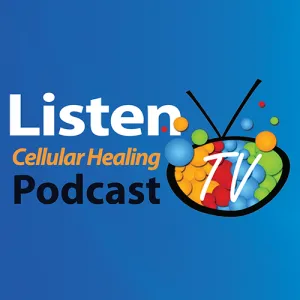Low-Carb Cookies: The Ultimate Keto Holiday Cookie Guide
The holidays are a time when family and friends gather, often around food. Being hit with so many opportunities to indulge, this time of year can often be difficult to stay on track with your health goals.
All hope is not lost, however, thanks to the rise in popularity of ketosis and the access to so many incredible low-carb sweetener alternatives, flours, and more. Pair that with the information-sharing capabilities of the internet, and you’ve got yourself near-infinite possibilities for delicious cookies without the glycemic load.
All these cookies in this guide are low-carb, keto-friendly– so you can leave a plate of cookies out for Santa that will keep him fueled on good fats and give him energy for the long night ahead…. without weighing him down with sugar!
These cookies also make for a great gift for family and friends. Bake a batch, place them in a festive tin, and don’t forget to include all the ingredients on a tag! What a great opportunity to show your loved ones that you can enjoy festive cookies without losing track of your health goals.
Keto Substitutes
The key to ketogenic cooking and baking is using high fat, moderate protein, and low-carb ingredients. Although this is relatively simple to do when it comes to breakfast, lunch, and dinner foods– it can become slightly more challenging in the realm of baking and desserts. Often these foods are sweet and/ or have a delicate ratio of ingredients, and so removing the sweetener or making a 1:1 ratio swap with a more keto-friendly ingredient may not work out.
The major ingredient needing substitution when baking is generally the sweetener, most often good old fashioned sugar. White sugar can be substituted at a 1:1 ration with paleo-friendly coconut sugar, but unfortunately, that does not reduce the glycemic index much. Keto-friendly sweeteners must be very low glycemic, which means no maple syrup, dates, or honey.
Ultimately, whether a baked good qualifies as keto or not does somewhat rely on the individual’s glycemic tolerance to the ingredients. Even cow’s milk can throw certain people out of ketosis, while others can actually handle a significant amount of carbs and remain in ketosis. Like all things, moderation is probably the key while consuming keto-style baked goods and staying in nutritional ketosis.
Keto-Friendly Low-Carb Cookies Baking Ingredient List
This list is not exclusive but covers the bulk of commonly-used ingredients for keto-friendly baking. When seeking out recipes you can cross-reference this list to check if your baked goods will make the cut on a low-carb day. Keeping your pantry stocked up with these items will ensure that you have all the tools you need to easily whip up a batch of delicious keto-cookies.
Flours
- Almond flour
- Almond meal
- Coconut flour
- Flaxseed meal
- Hazelnut meal
- Pecan meal
- All other ground nut meals
Thickeners/ Binders
Sweeteners
- Monk fruit sweetener
- Erythritol
- Stevia
- Tagatose
- Xylitol
Fats
- Avocado
- Avocado oil
- Coconut oil
- Coconut milk
- Almond milk
- Ghee
- Butter
Other
- Vanilla bean powder or extract
- All herbs and spices
- Baking powder (aluminum-free) or cream of tartar
- Baking soda
As you get more familiar with keto-baking, you will become more confident in making these swaps for yourself and not necessarily relying on recipes. For now, though, we’ve got your back with some of the most epic keto-friendly cookie recipes for this upcoming holiday season!
Holiday Keto Cookie Recipes
Low-Carb Cinnamon ‘Sugar’ Cookies
These cinnamon ‘sugar’ cookies are sugar-free but are reminiscent of snickerdoodles, and a total crowd-pleaser. Instead of sugar, the recipe calls for monk fruit sweetener, which is a low-carb sweetener alternative that does not spike blood sugar. Monk fruit comes from a small green gourd that looks like a melon, and its texture resembles cane sugar so it makes for a great substitute for any recipe that requires a sugar-like topping.
Ingredients
For cookies:
- 3 eggs
- 1.5 cup almond butter
- ¾ cup almond milk
- 2.5 cups almond flour
- 1.5 cups coconut flour
- ⅖ cup of coconut oil (solid)
- 2 cups monk fruit sweetener
- 3 tsp vanilla bean or vanilla extract
- 1.5 tsp cinnamon powder
- 1.5 tsp baking soda
- 3 tsp cream of tartar
- ¼ tsp sea salt
For topping:
- 4 tbsp monk fruit sweetener
- 1.5 tbsp cinnamon powder
Instructions
- Preheat the oven to 350F
- In a bowl mix the liquid ingredients (eggs, almond butter, almond milk, coconut oil, and vanilla extract) until smooth. You can use a fork or an electric hand blender.
- In a separate bowl, mix together the dry ingredients (almond flour, coconut flour, monk fruit sweetener, cinnamon, baking powder, cream of tartar, salt).
- Using your hands, slowly mix in the liquid into the dry mixture, mixing as you go to form a dough.
- Refrigerate for 30 minutes
- While you wait, mix together the topping monk fruit and cinnamon, and line your baking sheet with parchment paper.
- When the dough is chilled, form small balls (about 1 inch wide) and then roll them in the cinnamon monk fruit mixture.
- On the baking sheet, press down onto each ball to form a cookie, using the palm of your hand.
- Bake the cookies for 10-12 minutes and let cool for a few minutes before serving!
Low-Carb Shortbread Cookies
Shortbread cookies are a holiday favorite for many, but this recipe harnesses the power of almond meal and the sweetness of erythritol instead of conventional wheat and sugar to make the most perfect keto-cookie. The key to this recipe is getting your hands on a high-quality blanched almond flour (which is much finer than your regular almond meal). You can still make the recipe with regular almond meal, but it won’t be as classic a shortbread cookie. When using butter, opt for grass-fed butter because it’s more nourishing and offers the best flavor. For lactose-free, you can opt to use ghee, but sticking to butter will mimic the traditional shortbread best.
This recipe calls for a hand mixer that will properly beat together the ingredients. It’s a key tool to ensure the texture of the dough forms properly. You can also use a classic counter-top stand mixer.
Ingredients
- 3 ¾ cups blanched almond flour
- ½ cup + 1 tbsp slightly softened salted butter (take out of the fridge and leave at room temperature for 10 minutes before creaming)
- ¾ cup granulated erythritol
- 1.5 tsp vanilla extract or vanilla bean powder
- If using unsalted butter, add 1/ 2 tsp of sea or Himalayan salt
Instructions
- Using a hand mixer, beat together the erythritol and butter until it becomes light, fluffy, and creamy. Start slow to make sure the mixture doesn’t go all over the place– and work your way up until it’s creamed. This process should take 5 minutes on the nose (too little or too creamed will lead to crumbly cookies)
- Slowly add in the vanilla and almond flour, continuing to beat it with the hand mixer until your batter is formed. Scrape down the sides of the bowl as you go to make sure all the ingredients mix together.
- Form 1 inch balls and flatten them slightly with the palm of your hand, on a cookie tray lined with parchment paper. The dough will be crumbly but should form well when molded with your hands.
- Keep an eye on your cookies from 10 minutes onwards, since they can burn very quickly (it all depends on how hot your oven gets), total bake time varies from 10-12 minutes until lightly golden brown.
- Let the cookies cool *completely* until consuming, this is very important because the cookies become a shortbread texture only once cooled.
Classic Chocolate Chip Low-Carb Cookies
You can’t go wrong with a good old fashioned chocolate chip cookie, especially when they contain no blood-sugar spiking sugars. These soft chocolate chip cookies are sweetened with erythritol but are so delicious even your sugar and wheat loving friends and family will approve! Note that coming out of the oven they are very soft, but will firm up once cooled completely.
Ingredients
- 2 small eggs
- ¾ cups erythritol
- 2 and 1/4 cups blanched almond flour
- ½ cup softened coconut oil
- ¾ cups sugar-free chocolate chips or chocolate bar
- 1.5 tsp vanilla bean extract or powder
- ¾ tsp baking soda
- ½ tsp sea or Himalayan salt
Instructions
- Preheat the oven to 325F.
- In a bowl, whisk the eggs and erythritol until smooth.
- Add in the soft coconut oil and vanilla, and whisk again until smooth.
- With a folk, mix in the almond flour, baking soda, and salt until a dough forms.
- Use your hand to mix in the chocolate chips (if using a chocolate bar, chop first to form chunks).
- Form 1 inch balls and flatten them slightly with the palm of your hand, on a cookie tray lined with parchment paper.
- Cook for 10-12 minutes until the edges become golden brown, and remove from the oven and let cool completely before consuming. Cookies come out very soft but will firm up after about 15 minutes of cooling.
Double Chocolate Low-Carb Peppermint Cookies
It wouldn’t be a cookie guide without a double-chocolate option for the chocolate lovers out there! This recipe is a chocolate peppermint cookie inspired by candy canes, but the recipe can be made peppermint-free by omitting the essential oil.
Ingredients
- 1.5 cups smooth almond butter (soft, at room temperature)
- ¾ cup
- 6 tablespoons cacao powder erythritol
- ⅓ cup + 1 tablespoon granulated monk fruit sweetener
- 2 small eggs
- 5 tablespoons almond milk (optional, depending on how liquid the almond butter is)
- ⅓- ½ cup sugar-free chocolate or chocolate chips (depending on preference)
- 10 drops of edible grade peppermint essential oil
Instructions
- Preheat oven to 350F
- In a bowl, mix the almond butter, monk fruit sweetener, cacao powder, peppermint essential oil, and egg until smooth.
- If the mixture is crumbly/ won’t form, add in the almond milk and mix again. The batter should be soft but not liquidy or runny! If your almond butter is very soft then you probably won’t need the almond milk, but if it’s firm you probably will need to add it.
- Add in the chocolate chips, or chop the chocolate and add in the chunks and mix in with your hands.
- Roll the dough into 1 inch balls, and press into cookie shape onto a baking sheet lined with parchment paper, using the palm of your hand.
- Bake for 10-12 minutes, and let cool completely until consumed (they will firm up once cooled).
Chewy Gingersnap Cookies
It wouldn’t be a holiday cookie guide without a classic gingersnap cookie. These sugar-free cookies use erythritol instead of sugar for a chewy delicious ginger-molasses flavor. The chewiness comes in part thanks to nourishing gelatin. Note the importance of opting for high quality organic, and pasture-raised animal products. This recipe calls for gelatin, butter, and eggs– which are nutrient-dense (keto-friendly!) food when they come from pasture-raised animals.
These cookies make for a great post-dinner cookie since ginger and clove help with digestion!
Ingredients
- 3 cups of almond flour
- 3 tbsp gelatin powder
- ¾ cup soft butter
- ¾ cup almond butter
- 1.5 cups erythritol
- 3 eggs
- 1.5 tbsp ground ginger powder
- 1.5 tsp cinnamon powder
- ⅓ tsp ground cloves
- 1 tsp vanilla bean extract or powder
- ¾ tsp baking soda (aluminum-free)
Instructions
- Preheat the oven to 325F
- In a bowl, mix together the butter and almond butter until smooth.
- Add in the eggs and vanilla and beat until smooth.
- In a separate bowl whisk together the dry ingredients (almond flour, erythritol, gelatin, ginger, cinnamon, clove, and baking soda)
- Combine the dry and wet ingredients and mix until a dough forms.
- Roll the dough into 1 inch balls, and press into cookie shape onto a baking sheet lined with parchment paper, using the palm of your hand.
- Cook for about 12 minutes and let cool completely before eating (they will firm up once cooled).
The Keto Roadmap E-Book!
More than just a diet book, The Keto Roadmap E-Book includes:
- 5-Day Meal Plan
- 50 Ketogenic-Friendly Foods
- Foods to AVOID & Substitute
- Keto Smoothies to Enjoy On-The-Go
- 3 Mouthwatering Dessert Recipes
- 3 Fat-Burning Cocktail Recipes
Beyond that, it will help you understand some of the core principles and process of getting into the state of ketosis, and where most people fail. Imagine burning fat while eating Keto pizza, cheesecake, and wine, keto cupcakes, smoothies, and ice-cream.
This eBook and Diet Guide was designed for someone who LOVES food and doesn’t want to sacrifice taste while burning more fat on Keto!






















